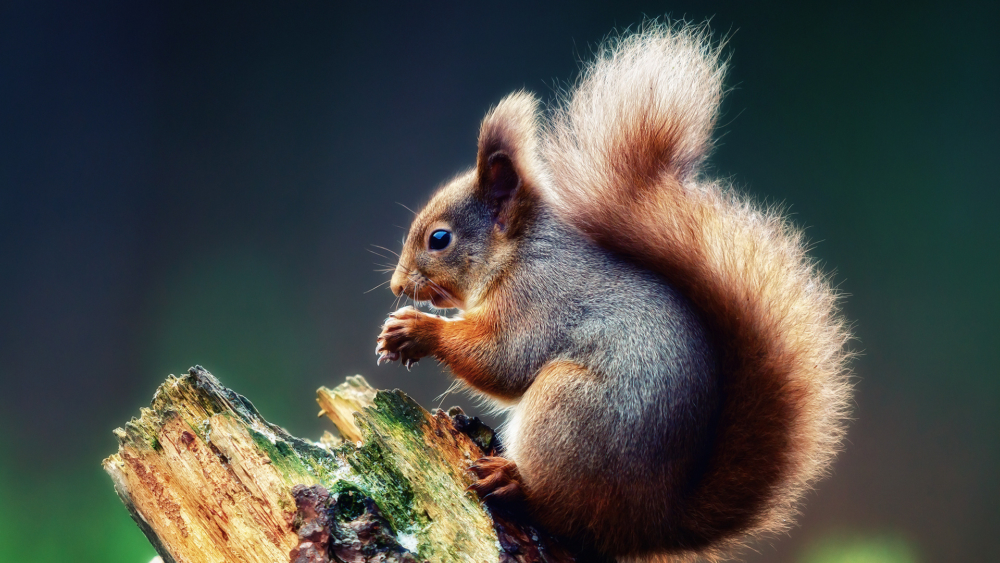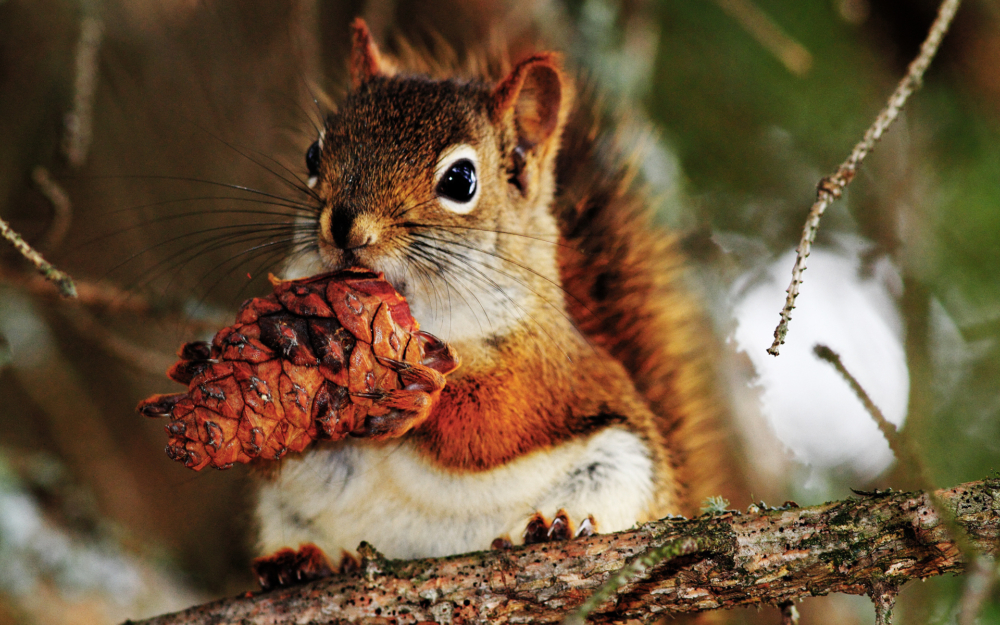Squirrels are known for their ability to make extensive stocks for the winter. But most people have very superficial knowledge of what the animal eats, because its diet includes not only nuts, berries and mushrooms.
Material Content:
What do proteins eat in nature?
Proteins adapt very well to the environment. In our latitudes, nuts, seeds, and fruits actually form the basis of their nutrition. But for many it will come as a surprise that these rodents are far from vegetarians: they do not mind eating a frog, insects, eggs. Often animals get to lizards and even chicks in nests. These cute individuals are responsible for the destruction of a large number of small songbirds. Especially often, proteins eat insects and small vertebrates in winter, when it is difficult to find other foods rich in vitamins and fats.
Despite the fact that squirrels are able to survive even in the open savannah, they feel very comfortable in walnut orchards and fruit forests. Vast reserves are always prepared for the winter: seeds, nuts, seeds, berries, cones of conifers with grains inside. But very often they forget where they hid their provisions. As a result, they find food elsewhere, and arranged hiding places help other animals and birds survive. Some seeds remain undetected and germinate. In this way, proteins have a positive effect on the growth of the forest, updating it and spreading seeds over long distances.
Unlike its ordinary counterparts, flying squirrel consumes products of animal origin much less. Basically, it feeds on young needles, leaves, buds and shoots.
What animals in captivity and in parks eat
Squirrels feel comfortable in urban conditions, settling in gardens and squares.There, not only familiar nuts and berries are available to them, but the diet is enriched with treats from people. However, you need to be very careful in what you treat the squirrel in the park zone or in natural conditions, because their organisms are not able to digest everything that people eat. You can offer rodents seeds, pieces of bread. Protein-rich pine nuts will be especially helpful. But it is strictly forbidden to give sweets to proteins: their benefits are negligible, and there are already enough carbohydrates in the rodent's diet.
Cedar cones are very useful for animals. They contain up to 150 seeds, which helps proteins make a lot of reserves. In the absence of other food, animals can eat exclusively pine nuts. This is the best food rich in nutrients, vitamins E and P, iodine and glucose, as well as enriched with protein.
On the day she eats up to 5 pieces, if she can find other feeding.
Features of feeding at home
Protein diet in captivity is different from food, which the animal manages in vivo. Not every owner will offer his pet insects, lizards of chicks. Basically, pets are satisfied with hazelnuts, walnuts and pine nuts, and also will not give up a small amount of peanuts.
Mixtures of pumpkin, sunflower and melon seeds will be useful. It is important that nuts and seeds are not pre-processed or roasted, you can not give salty nuts to the protein. In other words, the food should be as close as possible to the one that the squirrel eats in the forest. But walnuts can be slightly cracked so that the pet quickly gets to the edible core. It is forbidden to give almonds. Avoid the temptation to feed your pet fried sunflower seeds from a pack - this can greatly harm the animal and affect its health.
If there is a forest or pine forest near the house, you can bring cones to the squirrel. In this case, care should be taken to avoid collecting empty cones, the seeds of which have already fallen out or have been eaten by forest animals.
As a source of calcium and phosphorus, it is useful to prepare for the protein a mixture of ground fish or beef bones. With gratitude, the animal will also accept pupae of ants, as well as raw quail eggs, which are easy to find in a large grocery store.
If you want to add fruit to your beloved pet’s diet, offer him apples, bananas and pears. Vegetables will be superfluous, since proteins simply do not eat them. In addition, there should always be a drinking bowl with clean water.
It is very important not to overfeed the protein. This shortens their lifespan. Fattened individuals run the risk of dying from cerebral hemorrhage.
Differences in protein diet in winter and summer
In the summer, the basis of the animal diet is made up of shoots, bark, tree buds, seeds. Closer to autumn, fruits and berries, a variety of mushrooms are added. But in the cold season, when there is not enough other food, the protein survives not only due to the stocks made, but also ruining the nests. They eat tasty and nutritious eggs and even hatched chicks, catch frogs and insects.
When there is absolutely nothing suitable for lunch on the inhabited territory in winter, animals can go in search of a new home. To provide themselves with food, they are even able to cross rivers and lakes, cross densely populated points. In urban conditions, it is easier for squirrels to adapt to winter cold: surviving even the most severe cold and lack of food helps the care of compassionate people who are happy to treat animals with nuts and seeds.














